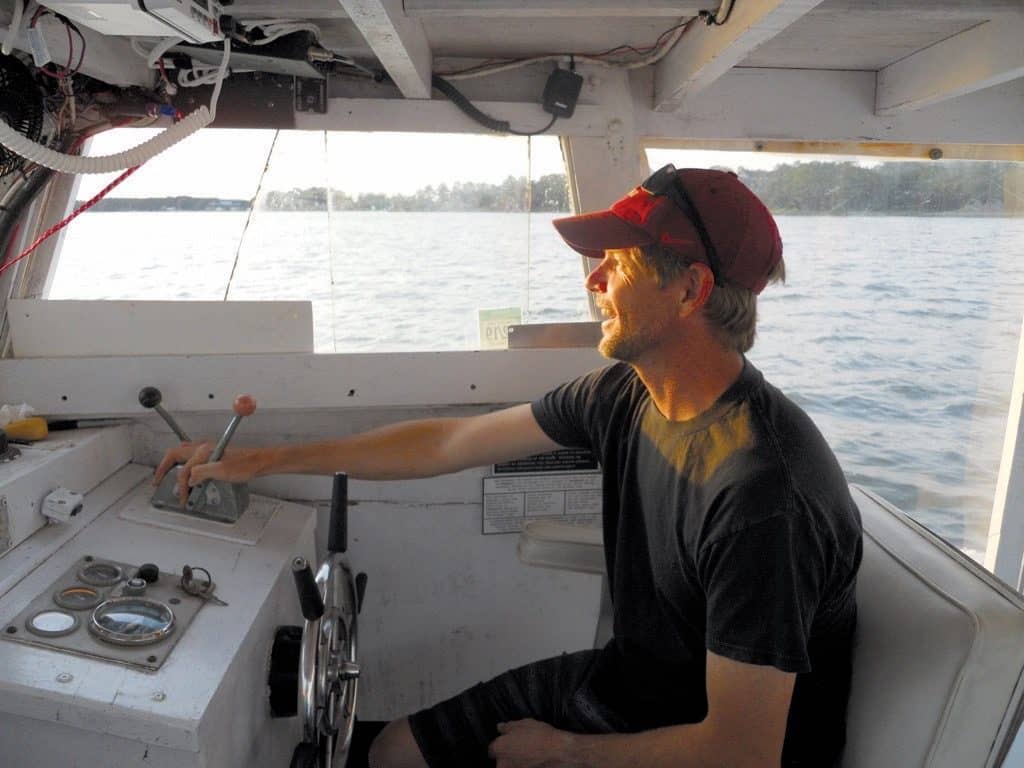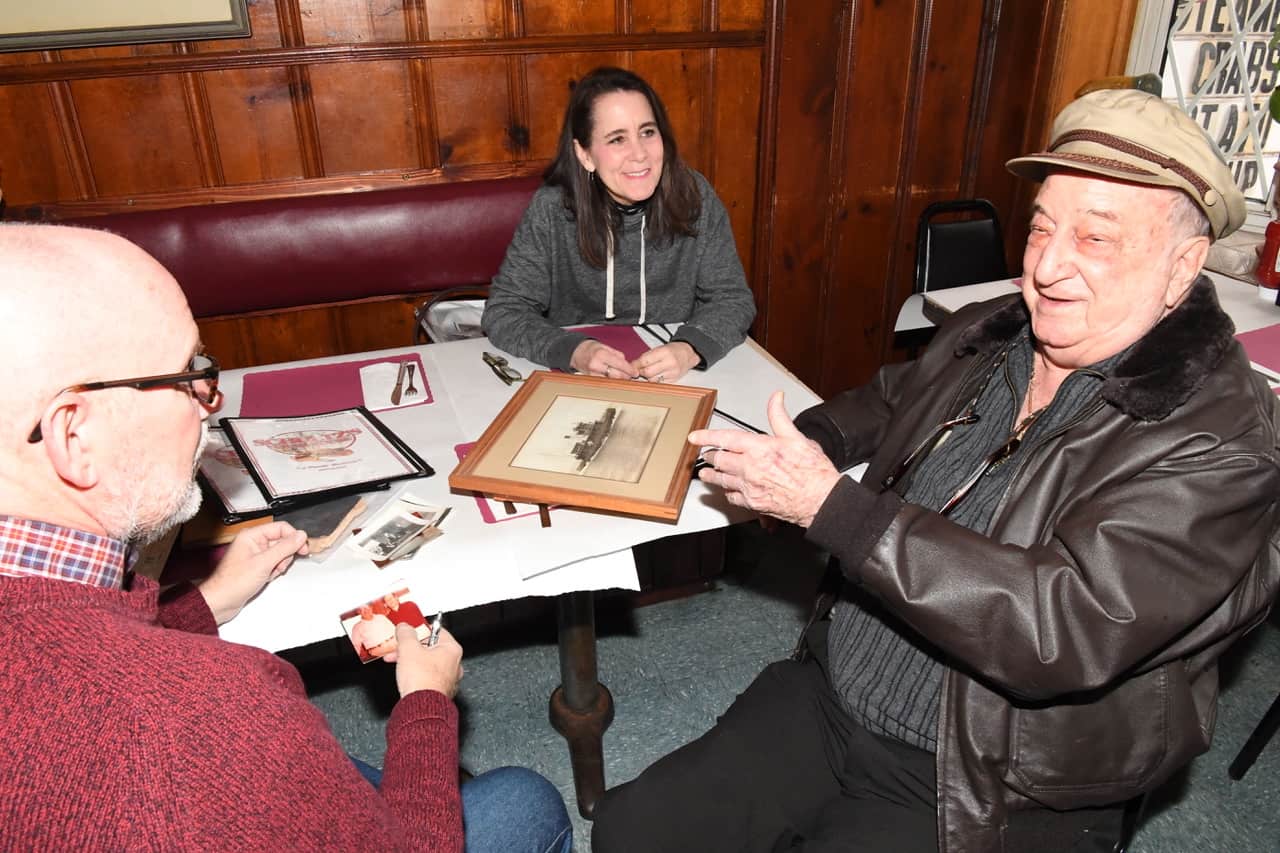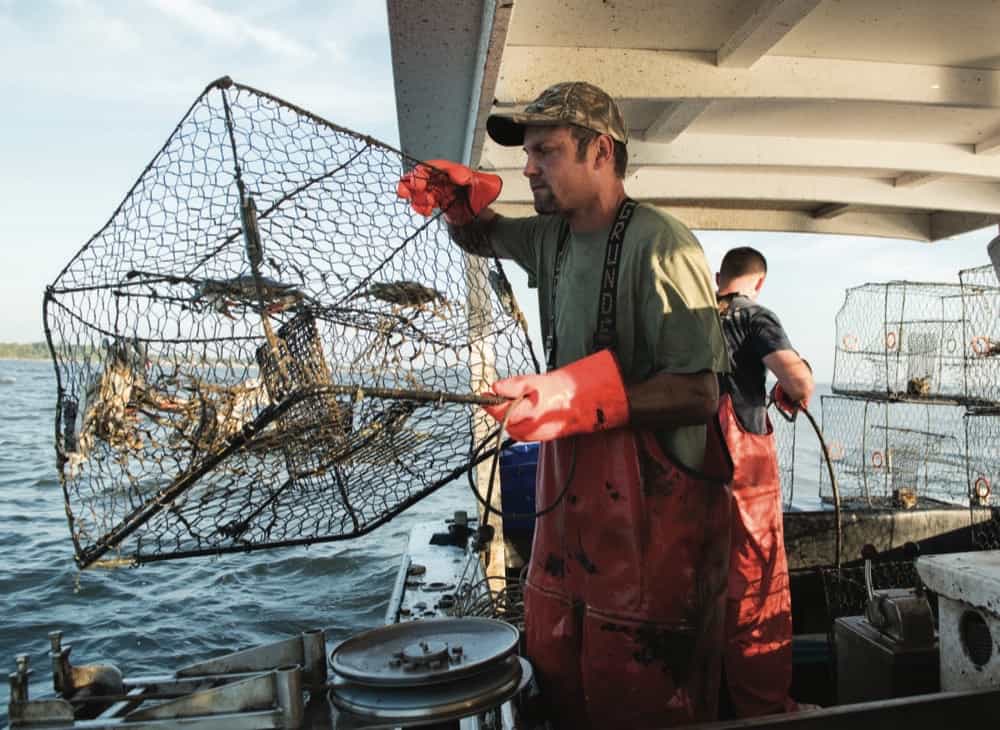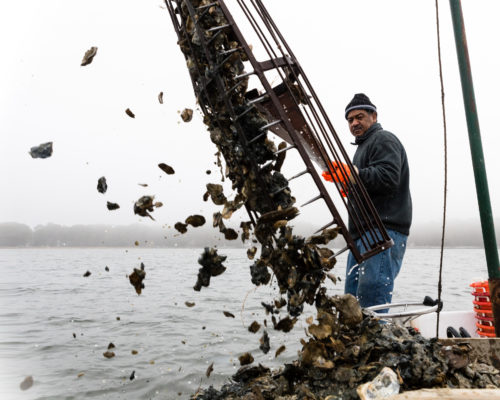Watermen Heritage Tours offer opportunities to explore Chesapeake Bay ecology and culture.
Watermen Heritage Tours began in 2008 with funding from the Maryland Department of Natural Resources as an effort to help watermen affected by low crab harvests. The department retained the Chesapeake Conservancy to develop an ecotourism education program to increase incomes in watermen’s communities. Building on their experience supporting the John Smith Chesapeake Historical Trail, the conservancy developed curricula and provided training to waterman to host tours and market ecotourism services. By 2013, the program had trained about 80 watermen in Maryland and built a website to promote tour operators offering a range of tourism experiences.
The idea expanded to Virginia in 2013, when Chesapeake Environmental Communications (CEC) worked with the Virginia Waterman’s Association and the Rappahannock Community College (RCC) Workforce and Community Development Office to support the growing ecotourism industry. The collaborative Virginia program now offers free tourism training to qualified watermen and women. It delivers a three-course program that covers marketing, customer service, safety, liability and insurance, and building community partnerships. Watermen register to attend the RCC training program and CEC leads the courses. Upon completion, participants receive a certificate and listing on the WatermenTours.com website.
These efforts not only increased and diversified watermen incomes, they also enabled watermen to engage more actively in Bay conservation. For the rest of us, Waterman Heritage Tours allow explorers of all ages to get out on the water to enjoy the rich heritage of Chesapeake Bay.
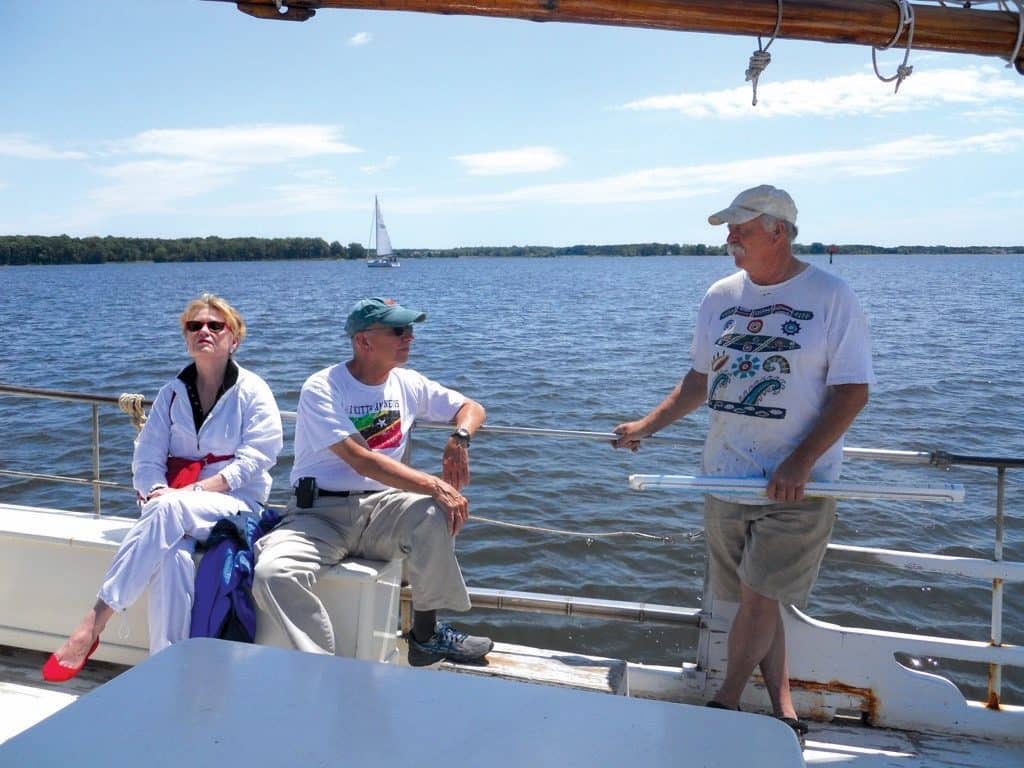
Captain Ed Farley // H.M. Krentz
oystercatcher.com
410-745-6080
St. Michaels, Md.
As he sails his skipjack over the oyster bar, Captain Ed Farley sweeps his arm over the horizon and proclaims: “This is a beautiful place, full of life.” On this summer day, the skipper of H.M. Krentz guides ten ecotourists on a two-hour cruise out of St. Michaels. They listen to his stories about the oysters, crabs, osprey and other critters living in and around the Miles River on Maryland’s Eastern Shore. Farley pauses the instruction long enough to pull aboard an oyster dredge and examine its contents. With evidence in hand, he summarizes the health of the oyster stock and provides intimate details about horseshoe crab mating habits. Stories and tall-tales continue as Farley lays out a nautical chart showing local oyster bars and the geological features of the river.
Ed Farley is one of several Maryland watermen/women who host tourists aboard their boats as a way to supplement fishing incomes and teach people about the Chesapeake Bay. Originally from New England, Farley anchored in the Bay 40 years ago to live and work on the water. He has been harvesting oysters and sailing skipjacks ever since.
After 40 years of pulling an oyster dredge from a skipjack under sail, Captain Farley demonstrates graceful and vanishing sailing skills. He offers guidance to novices: “You have to glide over the bar and work along the edges,” he advises as he lets out the mainsail. And he reflects on his younger days when Tilghman Island hosted 19 working oyster skipjacks.
Captain Ed began escorting educational groups for the Chesapeake Bay Foundation in the 1980s. Now he operates regular skipjack tours out of the Chesapeake Bay Maritime Museum in St. Michaels. Like most watermen, Captain Farley loves his work. “There are no guarantees in life,” he reflects. “You have to do what you love before it’s too late.”
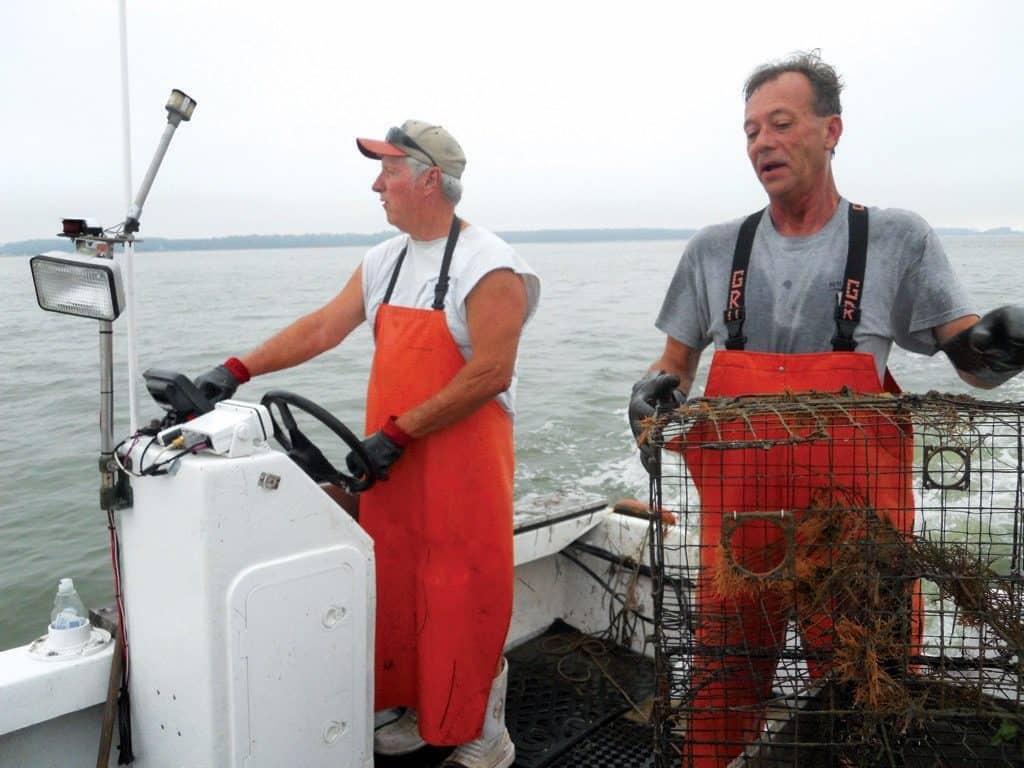
Captain J.C. Hudgins // Risky Business II
watermentours.com/captain/j-c-hudgins
804-725-6347
Mathews, Va.
On most days, Captain J.C. Hudgins and his mate, Raymond Walker, pull about 100 crab pots from the Hole in the Wall channel near Mathews, Virginia. But two days a week, Captain Hudgins takes a break from commercial crabbing to host tourists aboard Risky Business II and explain the ecology and the rich maritime tradition of Mobjack Bay near the southern end of the Bay. Hudgins grew up here as the son of a watermen, and he can point out his boyhood home from the stern of his crab skiff. A former oil-tanker captain, he left Virginia to pilot commercial vessels around US ports but returned to Mathews to work as waterman. Walker knows why. “I love the water,” he says, “It’s my home and it gives me my freedom.”
His knowledge, experience, and easy-going style make Hudgins a great tour operator. He is a natural and warm story teller with a rich Mathews accent that shines like a church bell. But Hudgins speaks with special resonance for watermen and tourists. As president of the Virginia Watermen’s Association, he serves as an advocate for Bay fisheries. In his tour operator role, he brings knowledge and purpose to his work. “I want for people to know where their seafood comes from,” he says. For Hudgins and Walker, it comes from crab pots baited with oily menhaden and pulled aboard a two-man skiff stacked with crab baskets. As Walker separates captured crabs into various baskets, Hudgins estimates the value of the catch. “These number one jimmies fetch $80 per bushel; but those small crabs will bring only $24,” he figures. Walker nods and tosses a small crab into basket number two. After returning to the dock, Hudgins takes his catch to the local processing facility and delivers seven bushels of fresh blue crab before 9 a.m..
Hudgins shares his waterman wisdom with tourists around Mobjack Bay aboard the 36-foot Risky Business II docked at his home pier near Mathews. Tours usually last two to three hours and can be customized to meet special interests.
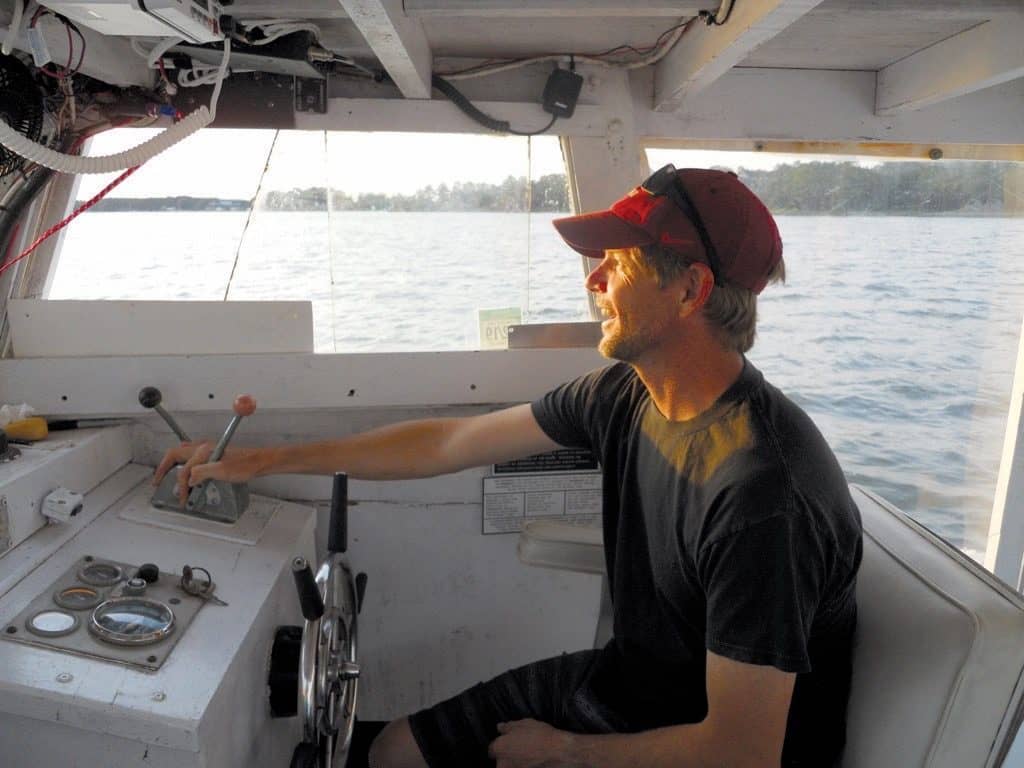
Captain Trey Sowers // Helen Elizabeth
watermentours.com/captain/trey-sowers
804-815-6132
Port Haywood, Va.
Captain Trey Sowers likes to show off his boat. And for good reason. In 2014, Trey restored an authentic 34-foot, 1991 Chesapeake Bay deadrise built by legendary Rappahannock boat builder Al Silvey. He refitted the Helen Elizabeth as an excursion vessel and now proudly points out upgrades to visitors who appreciate a classic wooden boat: new juniper washboards and strip-planked sides crafted from local pine and fir, all tacked onto a solid oak frame. Sowers works full-time as owner of Chapel Creek Oyster Company and leads tourist excursions to supplement his income. Aboard his classic deadrise, Trey shares his knowledge of estuary ecology and recounts colorful stories of historic Mobjack Bay.
Most visitors board the Helen Elizabeth from the Inn at Tabbs Creek in Port Haywood, Virginia for two-hour sunset cruises on the East River of Mobjack Bay. From his perch on the starboard rail, Sowers recounts the former oyster shucking houses, ship building yards, and steamship wharves that lined this Virginia coast prior to the 1933 Chesapeake-Potomac Hurricane. As the Helen Elizabeth moves up the East River, Sowers points out an 18th century tidal water wheel and the former home of Captain Sally Tompkins, legendary Civil War nurse and the only female Confederate officer.
Under a setting sun, Sowers turns his attention to oysters and shows visitors how to shuck and eat the slippery bivalves. He invites a few hearty volunteers to try them.
He talks with authority about oyster farming and the growing specialty markets in Richmond restaurants.
In Sowers, visitors will meet a new generation of watermen adapting to changing times with multiple skills. But like all watermen before him, Sowers shares a passion for the Bay and a keen eye for a good deadrise.

